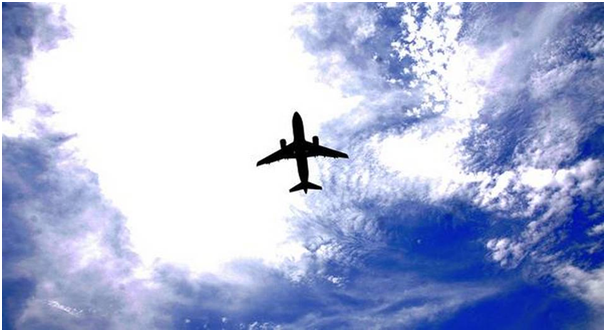 Aeroplanes may be ejecting significant amounts of black carbon (BC) — a pollutant known to aggravate breathing disorders, upset the monsoon and quicken glacier melt — and may be depleting the ozone layer, according to a study by climate researchers from multiple institutions in the country. Though airborne, BC is known to dissipate and settle down in a few months under the influence of rain and wind and is unlikely to travel upward of 4 km. However, a group of scientists — including from the Indian Institute of Science and ISRO’s Vikram Sarabhai Space Centre — say they now have evidence of such particles existing up to 18 km into the stratosphere and there are about 10,000 of them in every cubic centimetre.
Aeroplanes may be ejecting significant amounts of black carbon (BC) — a pollutant known to aggravate breathing disorders, upset the monsoon and quicken glacier melt — and may be depleting the ozone layer, according to a study by climate researchers from multiple institutions in the country. Though airborne, BC is known to dissipate and settle down in a few months under the influence of rain and wind and is unlikely to travel upward of 4 km. However, a group of scientists — including from the Indian Institute of Science and ISRO’s Vikram Sarabhai Space Centre — say they now have evidence of such particles existing up to 18 km into the stratosphere and there are about 10,000 of them in every cubic centimetre.
Given the shape and location of these particles, they argue, it could only derive from emissions from aviation fuel and they pose a problem because these black carbon particles can linger long enough to provide a fertile ground for other chemical reactions that can deplete the ozone layer.
“This is the first time that any group in the world has shown that black carbon from aircraft can go to the stratosphere and affect the ozone layer,” said S.K. Satheesh, chairman, Divecha Centre for Climate Change, Indian Institute of Science. He was among the authors associated with the study, published in the peer-reviewed Atmospheric Chemistry and Physics.
Rising count
The stratosphere is a stable region of the atmosphere and because BC particles absorb heat, they warm the surrounding air, become lighter and rise to greater heights by a process called ‘self lift’ and persist in the air. The sheer volume of air travel means that the black carbon count only continues to increase.
Because BC particles strongly absorb solar and terrestrial radiation and heats up the atmosphere it can upset the monsoon system. If deposited on snow, it could accelerate the heating of snow and quicken the melting of glaciers. Moreover, when BC particles are located above highly reflective surfaces (snow or clouds), their absorption efficiency is amplified. It’s known to be one-fourth as potent as carbon dioxide in whetting global warming and ways and means to curb its emissions are increasingly part of international climate discussions.
Last year the Indian Meteorological Department (IMD) launched a System of Aerosol Monitoring and Research (SAMAR) to study the concentration of black carbon in the atmosphere due to air pollution and its impact on climate. “At those heights, it is unlikely that BC would directly influence the monsoon, though it can indirectly affect it by modifying high altitude clouds,” said K. Krishna Moorthy, a co-author, also at IISc.